I'm working through the polygon triangulation algorithm in Computational Geometry: Algorithms and Applications, 3rd edition, by Mark de Berg and others. The data structure used to represent the polygon is called a "doubly-connected edge list". As the book describes, "[it] contains a record for each face, edge, and vertex". Each edge is actually stored as two "half edges", representing each side of the edge. This makes it easier to walk the half edges around a face. The half edge records look like:
// Pseudocode. No particular language. The properties need to be pointers/references of some kind.
struct HalfEdge {
Vertex origin;
HalfEdge twin;
Face incidentFace;
HalfEdge next;
HalfEdge previous;
}
Now imagine I'm processing this polygon, with one face (so far) called Face1. I need to add a diagonal at the dotted line. This will create a new face (Face2). It seems like I need to walk all those HalfEdges that now surround Face2 and set their incidentFace property to point to Face2.

But the book says:
The diagonals computed for the split and merge vertices are added to the doubly-connected edge list. To access the doubly-connected edge list we use cross-pointers between the edges in the status structure and the corresponding edges in the doubly-connected edge list. Adding a diagonal can then be done in constant time with some simple pointer manipulations.
I don't see any further explanation. I'm not sure what a "cross pointer" means here. The "status structure" refers to a binary search tree of edges that is used to easily find the edge to the left of a given vertex, as the polygon is processed from top to bottom.
Can anyone explain this further? How are they able to update all the edges in constant time?